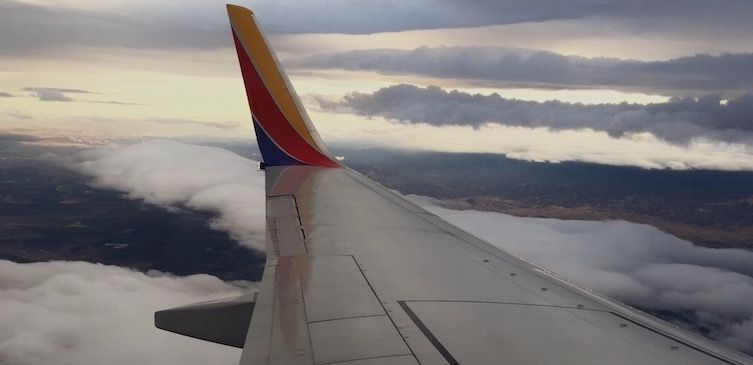I’m writing this during a cross-country flight, the perfect place to test the suggestions of Dr. Quay Snyder, the president of the Aviation Medicine Advisory Service regarding where to sit for the most comfort on a passenger jet. Here are Dr. Snyder’s suggestions and the results from my tests.
Suggestion #1
Do this | Book a flight on the largest possible plane
Why? They fly at the highest altitude so they have the least turbulence
What I did | This was an easy decision. I’m currently flying on a Southwest Airlines 737, the largest aircraft in their fleet. (Note: All the aircraft in Southwest’s fleet are 737s.)
Suggestion #2
Do this | Choose a seat that is directly over the wings—usually somewhere between rows 10 and 30.
Why? Seats over the wing won’t reduce motion entirely, but you’ll feel a lot less, according to Dr. Snyder. Seats at the front and back (aft) of a plane tend to have the most turbulence.
What I did | On the open-seating approach of Southwest, I chose a window seat on Row 14, exactly in the center of the wing.
Results
Because I fly often on Southwest Airlines, I know that the flight I am on at this moment is near perfect in terms of comfort. The turbulence (called, “bumps” by the pilot) is minimal, a lot fewer bumps than my bicycle commute to and from work, say. But I’m not sure I can credit the aircraft or where I’m sitting. The weather has been perfect. But I do believe that once you know where to sit and how to mentally prepare yourself for turbulence, you’ll be in for a somewhat smoother ride. According to Dr. Snyder, if you can secure a seat on the forward part of the wings, you’ll get a little peace and quiet too.
In the future, however, I will return to my practice of not sitting over the wing, as I enjoy taking photos of the earth passing by. (Current view out the window, Row 14.)

But even with bumps, remember this
While turbulence might be scary, here is some good news. The last major air disaster attributed to turbulence was on March 5, 1966, in Japan, near Mount Fuji. During the 50 years since that crash, the aircraft and the technology running and guiding passenger jets have improved greatly.
VIA | Lifehacker.com and USAToday.com
Thinkstock
